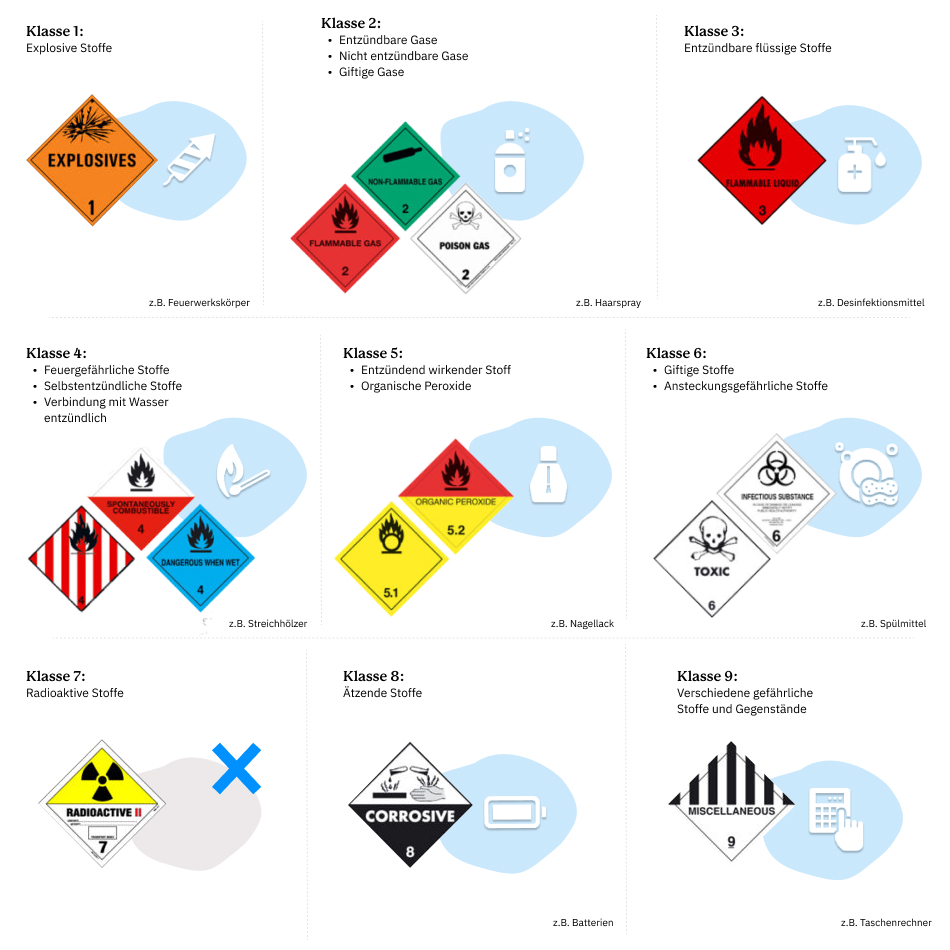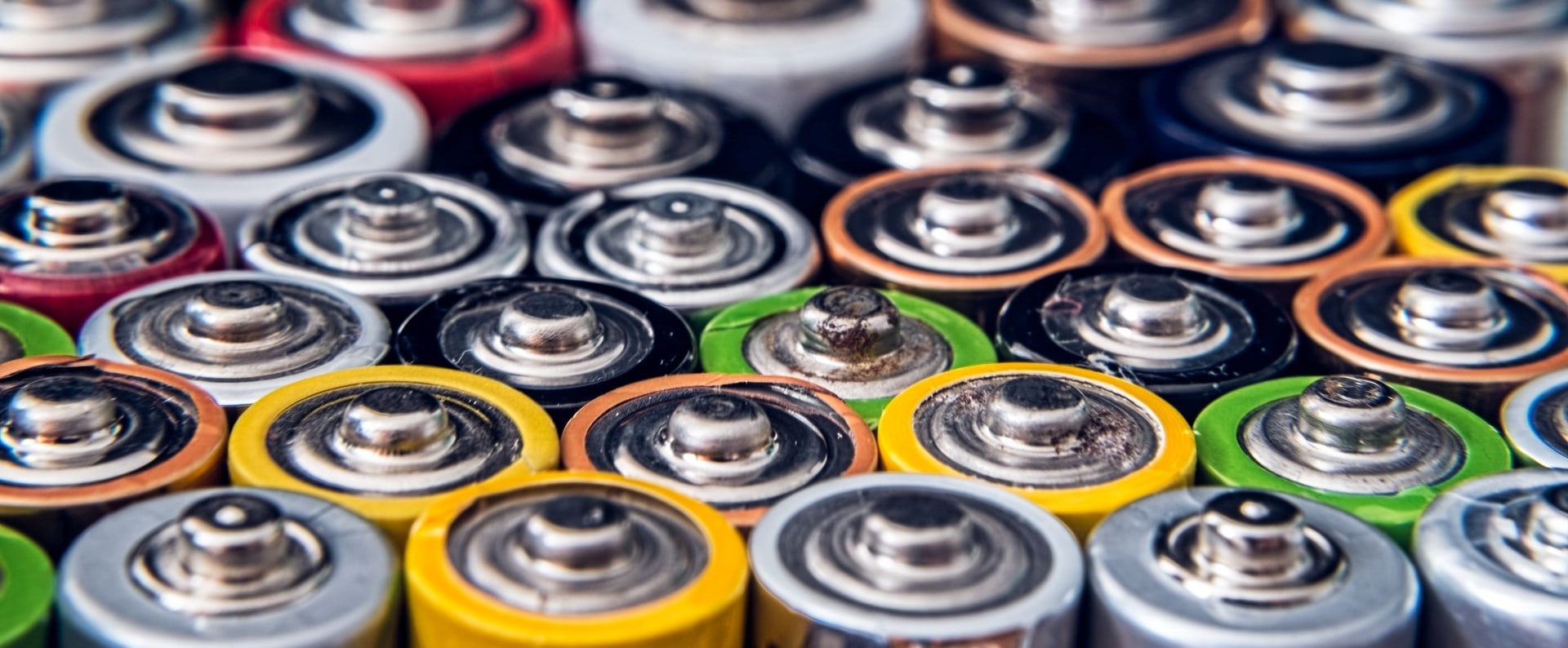E-commerce fulfilment is a complex process in which online retailers have to take a lot of things into account. But when there are hazardous substances in the shipping boxes, things get complicated for logistics. Whether cosmetics, batteries or cleaning agents - choosing the right service provider makes all the difference. In this blog post, we explain how to label your dangerous goods correctly; because it can be expensive for traders who don't do this!
Table of contents:
- What is dangerous goods?
- Dangerous goods classes
- Hazardous goods in e-commerce
- What are the requirements for a fulfillment service provider for dangerous goods?
- Why is it important to choose the right service provider?
- Conclusion
What is dangerous goods?
Hazardous goods refers to hazardous materials that are transported by a ship, aircraft or truck. Hazardous materials are materials and substances which, according to the Ordinance on Hazardous Materials (GefStoffV), are dangerous to people and the environment if the safety regulations are not observed. The Transport of Dangerous Goods Act (GGBefG) forms the legal basis for the transport of dangerous goods. The safety regulations specified by the law relate to storage as well as transport. Drivers receive special training and equipment. In order to be able to assess the danger posed by a product, it is relevant to know what the aggregate state of the goods is. This can be solid, liquid or gaseous. Subsequently, the dangerous goods are divided into classes, which are categorized from explosive (1st class) to environmentally hazardous (9th class).
Dangerous goods classes
The classification of dangerous goods classes (also: ADR classes) was created by the United Nations (UN) and is also regularly reviewed by them and adjusted if necessary. There are a total of nine main classes. For each class there are appropriate labels, which must be attached to the packaging or truck. Some of the classes have subclasses (division numbers). For example, the first class has six subclasses (1.1, [...],1.6) that indicate the type of hazard. In addition, information is given about the compatibility groups, which indicate which substances must not be transported together and what properties the substances have. They are indicated in letters. During transport, the hazard number and the UN number must be indicated; these provide information about the cargo and are important should an accident occur.
The United Nations divides dangerous goods into nine classes:
1st class: Explosive substances or articles containing explosive substances, e.g. fireworks
2nd class: gases, e.g. hairspray
3rd class: Flammable liquid substances, e.g. alcohol (vodka), certain paints, pesticides, disinfectants.
4th class: (Solid) flammable substances, e.g. coal, matches.
5th class: Flammable substances (substances that cannot burn themselves, but can have a supporting effect or accelerate the fire), e.g. hydrogen peroxide, nail varnish.
6th class: Toxic substances and infectious substances, e.g. pesticides, arsenic, detergents.
7th grade: radioactive substances, e.g. uranium, cobalt
8th class: Corrosive substances, e.g. batteries
9th class: Other hazardous substances, e.g. lithium batteries, watches, calculators.
Hazardous goods in e-commerce
Online retailers often do not know which products they have to label as dangerous goods. This repeatedly leads to errors in the fulfillment process. This is because many products that we perceive as harmless in everyday life are actually dangerous goods. For example, many cosmetics fall into dangerous goods classes 2 and 3. Accordingly, retailers must comply with labeling requirements for deodorants and perfumes, for example, and also pay attention to a number of things during storage. In the electronics sector, hazardous goods are sometimes even more difficult to detect, as they are hidden in harmless products such as watches, calculators, smartphones or cordless drills in the form of lithium batteries. Retailers who don't want to make mistakes with dangerous goods should consider a qualified external service provider for their e-commerce fulfillment.

What are the requirements for a fulfillment service provider for dangerous goods?
Dangerous goods fulfillment thus describes the common fulfillment process, with consideration for the legal regulations for dangerous goods.
Selecting a suitable fulfillment service provider can be difficult. Retailers often don't know what exactly to look for or what questions to ask in order to decide on the right fulfillment partner with an eye to the future.
It is important to ensure that the service provider can guarantee the correct storage for the respective hazardous goods or substances. In order to maintain an overview here, one can refer to the information sheets of the Employer's Liability Insurance Association for Raw Materials and Chemicals on the respective hazard classes. These describe in detail how warehouse operators can safely store and mark chemicals.
In addition, other important factors that contribute to the satisfaction of the end customer should be ensured. These include error-free picking, fast shipping and efficient returns handling.
Why is it important to choose the right service provider?
As if hazardous goods fulfillment wasn't complicated enough, it can be expensive for retailers if they make mistakes. This is because fines are due in the event of non-compliance with the Dangerous Goods Ordinance. The amount of the fine depends on the extent of the violation and can range from 100 to 500 euros. Not only the driver of the transport vehicle has to pay a fine, but if necessary all parties involved in the process.
Conclusion
Ultimately, the most important thing is to thoroughly vet the service provider in advance. Familiarize yourself with the basics of storing and transporting dangerous goods and ask the necessary questions to make an informed decision.
Do you prefer a (personal) consultation or do you simply want extra good coverage? Our logistics experts are at your disposal for a consultation. We look forward to helping you with your fulfillment needs!



